The Ministry of Defence has confirmed the service entry for the maritime-launched Future Cruise/Anti-Ship Weapon to be 2028.
The information came to light in response to Labour’s defence spokesman John Healey MP and can be found below.
James Cartlidge, Minister of State at the Ministry of Defence, addressed the inquiry, stated, “The planning assumption for service entry for the maritime-launched Future Cruise / Anti-Ship Weapon is 2028; a decision around which options, including off the shelf choices, should fulfil this requirement is ongoing, and will be confirmed in due course in the Full Business Case.”
The FC/ASW initiative, co-developed by France and the United Kingdom and launched in 2017, is a successor to the jointly-developed Storm Shadow/SCALP, Exocet, and Harpoon anti-ship missiles. The programme, equally funded by both nations and spearheaded by European missile manufacturer MBDA, is outlined in the Lancaster House treaties.
In 2022, the programme was evaluating two missile concepts: a low observable subsonic cruise missile and a supersonic highly manoeuvrable missile, moving away from a previous focus on a hypersonic solution akin to the CVS401 Perseus.
The current trajectory of the FC/ASW programme involves completing the assessment phase by 2024 and proceeding to the manufacturing phase from 2025 to 2035. Notably, the programme plans to introduce two role-specific variants, with a deep-strike, land-attack variant expected to be operational from 2028 and an anti-ship variant from 2034.


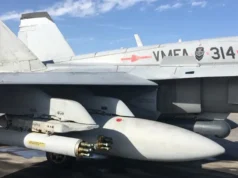

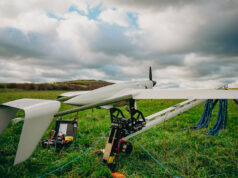
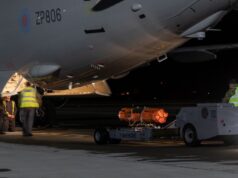
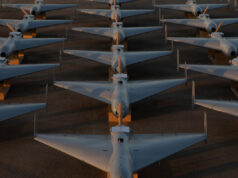
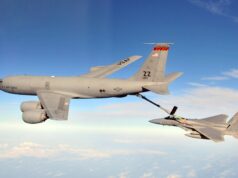
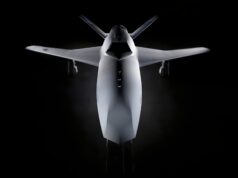

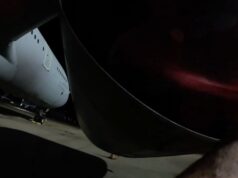
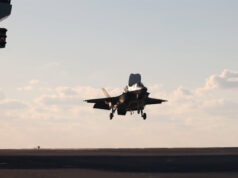

“evaluating off the shelf solutions” that’s sounds ominous, also the not having anti ship missile capability until 2034 is new. Just 11 sets of NSM to cover the role for 10 years. Now we know why the ordered the NSM.
Land attack replacement for stomshadow is probably the least important thing we need.
Land attack will still benefit ships though, currently have nothing. can save NSM for anti ship
Your assuming it will be on a ship though. Remember this weapon is also air launched. It’s entirely probable they will make the air launched version first. LRSM still not on USN ships yet years after being in the USAF.
Previous announcements had the ground launched version entering service first. If they maintain that, I shouldn’t worry on that account.
There is nothing new here – the 2028 and 2034 dates were announced last year when Italy joined the Programme.
Yes 2034 was announced some months back, a slip from previous announcements I believe.
Escorts having ASHM is so far down the list of priorities. The primary methods of sinking enemy shipping are still aircraft and submarines.
11 sets of NSM is enough to cover 2/3 of 19 escorts.
The timeline I believe is 2028 for VLS cruise missile, 2030 for Typhooon, 2034 for VLS ASHM and 2036 for Typhoon.
A agree, the NSM is probably most significant in that it gives our escorts a strike option…..
although the caveats to that is that china has a huge number of large surface combatants and if it came to general warfare RN vessels are going to end up facing them in places like the Indian Ocean..so single ship on ship engagements may well need to occur if china used a portion of its fleet in a commerce raiding role.
For the next 2 or 3 years we’ll only have 13 escorts. HMG corruption/incompetance/treason in action.
Roll on that peace dividened, regardless of the cosequences.
Yes, exactly, and if there’s a conflict and the RN loses any of its small surface fleet it’s going to make things a whole lot harder. A few more T31s wouldn’t break thd bank but they’d have more MK41 silos to fill. And we haven’t had any update on the last two Astutes, they’d be useful right now.
A bit off topic but i think i read on the news here in Aus last week that they’re also putting two Anzac ships aside due to lack of personnel. Seems to be a shared problem amongst the UK, NZ and Aus and maybe other countries? Hopefully there’s some work being done to address it as it’s rather fundamental!
11 sets only, no reloads, no options for increasing T45s to 4*4? Why can’t they bring thd AShM variant forward a tad? What’s going to happen to the sub launched variant for the Astute’s. A few more T31s might be good here too.
I assume reloads are being bought, the RN would probably like to fire some in training at some point.
T45s can’t really fit more.
MBDA has presumably done more work on the cruise missile variant which has been in the works for decades. They also have more experience in that department.
I have no idea what the timeframe is for the torpedo launched variant, would be interesting to know. I assume that will be a priority for all three nations.
Some more T31s would be very good.
And for the T26s if the FCASW takes forever there’s the option of 2*4 NSMs on the back roof as with the Aus and Canadian variants or anti ship TLAMs in the MK41s. The powers that be must be onto this with all those silos to fill. At least the hull platforms are being built as we type! Lol 😁
Personally, just counting the days to Sea Venom – that alone is taking quite long enough.
We no longer have 19 escorts , we would be lucky to 12 to sea
I never said we did. We do have 13 frigates on order and 6 destroyers in service.
I suspect the concern is depletion of Storm Shadow stocks due to donations to Ukraine. ‘Off the Shelf’ could simply mean purchasing more Storm Shadow, for now. Also there’s talk of buying Taurus from German stocks.
Land Attack from 2028…good, but A/S not until 2034?
I was wondering why the LA version doesn’t have some antiship ability? Doesn’t the NSM do both? It’s also interesting for the RN to now have a ship based LA which was previously just the domain of the TLAM subs. Bit of a substantial shift in new capabilities here.
Land track is much easier than ship attack, land targets are not moving and generally not jamming your and firing back. Just look at the major differences from JASM to LRASM.
JASM can still sink ships though just like storm-shadow, just needs to know where they are 😀
I’m still confused over this project in various ways. How can a 2028 in service date be achieved when they have barely decided what type of missile they are going for, unless two active prototypes are already under test, which we have heard nothing about however. Indeed the business case suggests decisions and even overall design still in flux, yet suggests production to start just a year after the final decision is made, which hardly clarifies matters. It can historically take up to a decade for a brand new missile, esp a sophisticated one like this missile family to reach active service from concept design decisions, so the term ‘off the shelf’ indeed seems pertinent here, yet what could they be referring to currently from MBDA. If not off the shelf it ties in more with the anti ship version in service date of 2034, the off the shelf (or adapted from) option only feasible for 2028. And why would, if they are fundamentally the same missile, there actually be a 6 year difference in service date here, surely an anti ship version isn’t twice as difficult to perfect from a single base design than the land attack version? So are these effectively fundamentally different missiles more than actual variants, even if it’s a single unified programme producing them. Is there a rocket scientist here who can better explain.
Look at JASSM and LRASM. Same weapon but the anti ship version took years more to make.
I guess it’s a lot easy to hit a land target than a moving and manoeuvring surface ship. Harder sums.
need a bigger piece of paper and a larger pencil…
Maybe, though I was always amazed when Tomahawk came along that you could create a low flying terrain following weapon travelling hundreds of miles and in its final termination stage recognise what might be a little more than a brick blockhouse or shed amongst who knows what surrounding it even if it didn’t move. These days you have serious interference with gps guidance and EW too to counteract. Meanwhile I watch a Brimstone, indeed three Brimstones pick out three different moving targets even as small and fast as a speedboat and seemingly eliminate them with ease at least under test conditions. So just seems counter intuitive to me though I guess for a long range weapon not having intermediate way marks to recognise and help in course correction adds some complications to the equation I accept.
It was interesting that the Russians painted some of their ships with simplistic silhouette changing ‘dazzle’ like paint jobs to try to confuse strike missiles recognition software in the terminal phase, so clearly they were concerned about their ships being tracked down by even relatively unsophisticated long range missiles.
HI Sutton says the Russian dazzle was more about Ukrainian sea drones which are using fairly simple commercial cameras.
Most terminal guidance for smart weapons is IR or SAR so dazzle won’t be useful.
Yes but the difference is that they were two different programs, the land attack JASSM was entering service as the LRASM missile program was first initiated and given the go-ahead and it then used the former as the basis quite logically. Our missile is being developed at the same start point and as others have said if anything the anti ship version seems to be the more vital (certainly was initially) though with the on off on decision on the intermediate missile system this is not quite the case perhaps any longer though only skewed through necessity not planning .
Yes true, but LRASM still not available in Mk41 for ship launch.
A ton of R&D work was completed 20+ years ago at MBDA.
Sure it was.
And computational compactness and sensors moved on to make bleeding edge very doable.
It does make you wonder what’s going on behind closed doors. In the very early 2000s (2001 I think) I was at a supercomputer conference and at the welcome dinner I was sharing a table with a group of researchers who were developing mobile phone apps – on a dedicated Cray supercomputer. The concept was that mobile devices would get to that level of power so they were essentially getting a jump start on exploring the possibilities that would be able to become realities in a decade or so’s time. I can easily see forward-looking research teams at MBDA and other defence companies doing similar stuff for guidance, target acquisition and other algorithmic stuff in anticipation of future advances in computational power per cubic centimetre (or however you want to measure it).
That always was really true.
A lot of coded is simplified with ‘good enough’ approximations that will run at the necessary speed and robustness.
Never let perfection be the enemy of good etc
It is a bit of a simplification but the perfect mathematical and code solutions and mostly code were known/existed.
Once you have the computation power and can remove most of the approximations then things start to work wonderfully well.
Couple that with terminal sensors that have improved beyond recognition and mid course corrections now commonly available.
Then you can actually use the full levels of agility in the terminal phase.
LRASM is intended to be integrated on Poseidon and F35.
JSM will be integrated on F35.
The B might be restricted to wing carriage but both those OTS options would at least give carrier strike some actual more strike capability and anti ship option sooner if the will was there.
It shows the problem of Typhoon and its slow pace and lack of weapons integration and options.
The first Type 26 is due to enter service in 2028? So it will need some land attack capability , FCASW needs to stick to those timings, otherwise we yet again face underarmed ships.
Tomahawk would be an option.
On one hand we are told Russia will rebuild in 5 years, yet there is no urgency to rearm
Tomahawk is still bloody expensive though, especially for export.
It is expensive, but looking at the in service date for both Glasgow and the missile, Tomahawk is quite possibly on the cards to put into those empty Mk41 silos.
The USA will be operating the V onboard their submarines sometime this year according to Naval Technology (December 15, 2023)
There will be lots of Mk41 silos that need something to go in them. Some version of Quad packed Sea Ceptor is a strong possibility, so are Tomahawk’s, despite their costs. No point in having all those silos else.
Exactly Deep32, and with the land-based option too it will serve as a very useful deterrent. Given that they will also fit the Astute class I would increase that order to 200.
I agree, the RN is going to have a lot of MK 41 silos to fill and Tomahawk is a very reliable 1000mile range strike missile…with block V opening it up for anti shipping as well. We really need those first new escorts to be as quickly commissioned as they can be and as effective deterrents as they can be,
It is only a small selection of missiles that we realistically can choose from before we get FC/ASM.
Tomahawk
Lrasm
Asroc
Quad packed sea ceptor
Don’t believe that both Asroc and Lrasm are serious considerations for us, but, by the time FC/ASM is in service we will have three hulls to populate (1xT26, 2xT32). Whilst we don’t need anything just yet, choices and orders will need to be selected in the next two years or so.
AUS and the US are currently ordering significant amounts of LR strike missiles of various capabilities to help counter the PRC threat,it’s high time we bit the bullet opened our wallet and followed suit.
Indeed, I suspect there will be some more CAMM based options as well, ER and MR…so a mix of the different range CAMM ( as it has a ASuW function) and tomahawk, backed up by deck mounted NSM would seem a minimal effort…shapps is an idiot, but he’s not wrong we are heading very quickly to a global conflict and if it happens it will be before 2030.
Don’t forget, plus Japan, 400 Tomahawks.
Export cost: $4 million (FY2023) x 100 plus Typhon land-based mobile launcher is both cheap and flexible compared to the loss of a Type 26.
A very useful deterrent to have with orders increasing all the time.
Having or not having tomahawks isnt exactly going to prevent the loss of a frigate though?
Thats the job of the Government
but it hopefully prevents or reduces the chance of things going kinetic in the first place….
Possibly not, but it will make any adversary think twice.
“As the head of US Fleet Forces, Caudle is a top advisor and the maritime component commander to US Northern Command chief Gen. Glen VanHerck, whose area of responsibility includes a large portion of the arctic region. (The Navy considers any geography north of the Arctic Circle as part of the region. Specific parts also fall under the responsibility of US European Command and US Indo-Pacific Command.)
During an interview, Caudle said the service has noticed both Russia and China taking more interest in the arctic, particularly Moscow, which is militarizing “their coastline… from coastal defense, cruise missiles, long-range aviation, undersea systems [and] radar systems.”
Intelligence, fleet defence, ISTAR, working with allies and advanced situational awareness stops a T26 from being hit. T45 is proving how capable a system it is in the Red Sea
How about HIMARS launchers, to launch GLSDB, GMLRS and ATACM’s?
Have they been tested?
its long been rumored that ATACMs has anti-ship capability- ballistic anti-ship was developed for the Pershing II missiles in the 80s. the replacement for ATACMs which entered service this year (PrSM) will for sure have anti-ship capability with PrSM inc 2, and its smaller than ATACMs so you can fit 2 into a single HIMARs. this does seem like an affordable option for land based anti-ship. Also much more mobile and easier to hide than the other options i can think of.
The US has done a lot of testing with using HIMARs from their amphib ships for shore bombardment- if needed you could press a cargo ship into service and put a few HIMARs on the deck to use as a sort of arsenal ship…
Hello Patrick C, as you quite rightly say, very useful!
The development program carries a new name, the Long Range Maneuverable Fires missile, and includes a new form factor and propulsion system.
“GLOBAL FORCE 2023 — As the US Army eyes weapons that can travel longer distances over waters in the Indo-Pacific region, it has selected at least two teams to work on a future Precision Strike Missile (PrSM) that can fly more than 1,000 km, possibly double the range of the current version.
Both Lockheed Martin and a Raytheon Technologies-Northrop Grumman team have told Breaking Defense they received Army contracts to develop a new missile form factor and propulsion system for the service’s PrSM Increment 4. That particular version of PrSM also has a new name: the Long Range Maneuverable Fires (LRMF) missile.
Lockheed Martin is currently producing PrsM Inc 1 to replace the company’s MGM-140 Army Tactical Missile System (ATACMS) and hit targets at least 500 km away. That missile, along with future missile increments, can be launched from both the M270A2 Multiple Launch Rocket System (MLRS) and the M142 High Mobility Artillery Rocket System (HIMARS).”
We still seem to be disarming if the other story about shedding vehicles, discontinuing frigate’s life extension, seemingly slow introduction of LandCeptor and arguably casual approach in replacing gifts to Ukraine is anything to go by.
The story about shedding vehicles was a non story. Half the vehicles were the white fleet which aren’t even owned by the MOD. Most vehicles were old or being replaced or in very small numbers which likely means it was damaged for whatever reason.
Westminster would not be ready before Glasgow enter service so there is no point wasting hundreds of millions upgrading her.
Just because there hasn’t been news about Land Ceptor doesn’t mean nothing is happening. Development of dragon fire was silent for months until the announcement of a successful test yesterday.
Shush, HMG tries to bluff the public we have a growing navy. Growing weaker & less credible!
“…we are told Russia will rebuild in 5 years…”
Cut off ruZZia oil and gas revenues, by an economic blockade, thay are f**ked without money!
Maybe the West can be more ready year on year just incase Putin’s spreading misinformation! As if he’s going to stick to a specific schedule and tell us when he’s ready! If the West continues to build up too that will send some signal of our intentions too, and China might even take more notice too. It’s a long term fight for “free will”, national self determination, international trade and access to the worlds resources going on.
Do we know if the UK P8s will get LRASM, JSM, or Spear 3 besides its torpedos? A bit of AShM ability would useful on these, so would a few more. 😆
I worked on this in 2001 as part of FOAS. RIP AG & JK
Not a big fan of this “considering off the shelf solutions” piece, sounds like saving short term money at the cost of domestic industry to me…
Every equipment submission has to consider both new types and things that could do the same job bought off the shelf. It is normal procedure.
Yes rightfully true in essence. But the extra question here that needs to be asked regarding the use of that term is that ‘off the shelf’ excludes anything that is not produced by MDBA surely as the agreement that they will lead the program and produce the missile is already fixed. A true off the shelf option would mean a competitive comparison of what is available and go for the best solution within the given criteria.
And that will have to happen. You still have to do a comparative evaluation to convince the Treasury that what you are buying is value for money. Recently the RN has bought NSM rather than an MBDA product as an interim ASuW weapon as it was the best option. MBDA don’t have carte blanche to just sell us any old rubbish.
Sadly MBDA only have the Exocet and Marte, as their heavy-ish anti-ship missiles. Exocet is made by the French arm of MBDA. Whilst Marte is made by the Italian arm.
To be brutally honest, both Exocet and Marte, don’t come close to the performance of Kongsberg’s NSM. As both are your traditional radar guided anti-ship missile. Where as NSM has been designed to be stealthy. From its design and material composition. As well as using a passive imaging infrared sensor to find and then lock onto its intended target.
As both Exocet and Marte use a basic radar to find their target, they can be quite easily affected by electronic countermeasures. Plus their radars cannot provide the high fidelity resolution of the target, to positively identify it. So in a congested littoral zone, they might easily target the wrong ship.
NSM by contrast uses its passive IR to generate an image of the target, that is compared to a library image. It also has a two-way data-link. Where the target can be fed back to the operator to further confirm the target. Secondly the NSMs IR sensor is not easily decoyed by countermeasures.
So given the options, I believe the RN made the right decision in purchasing NSM.
Teseo MK2/E is another ASM from the MBDA Range.
As long as that’s all it is, no worries. I’m tired of seeing good domestic workshare going to the US for inferior/just-good-enough weapon systems.
Fair enough for Chinook and Apache, we’ve got nothing even in the pipeline that could serve as an alternative.
How are they inferior weapons? Not arguing just genuinely curious. The LRASM is extremely advanced in terms of its sensors and autonomy as well as low observability. I can’t think of anything comparable… Same goes for SM-6. US stuff is tested more than anything else and in combat the high end systems seem to exceed expectations (patriot in ukraine for example) The tomahawk is probably a less than ideal anti-ship platform but you have to remember even China only has so many ‘elite’ anti-air destroyers and other targets that would warrant anything more than a simple tomahawk or bomb targeting it.
In all honesty, I didn’t have those specific weapons in mind when I was writing that statement- but I think they support my point.
LRASM (as far as I can tell a Storm Shadow equivalent in range and warhead but with a seeker that allows it to hit moving targets- hint hint MBDA, look into seekers…) is air-launched only; if we wanted to mount it on a ship then we’d have to pay for a canister or VL-launched version to go through qualification testing. I know the LockMart has tested both concepts successfully, but that doesn’t mean that they can actually sell it in those forms without further testing and then integration onto the specific platform. The time it would take to do that, we’d have FC/ASW -a weapon a generation newer and domestically produced- ready to go. Same with qualifying it on an aircraft- why bother when we can get Storm Shadow with an updated seeker?
SM-6, you’re running into similar problems of integration (ignoring the cost point for a minute), as we don’t have any Mk41 VLS and it doesn’t come in cannisters. Plus it’d have to be integrated into our combat management system etc. etc. By the time all of that’s done, once again we’re looking at FC/ASW and the newer blocks of Aster 30 being online- which theoretically (hopefully) cover off SM-6’s capabilities more or less.
As far as Tomahawk goes, it too will likely be inferior in terms of AShM than FC/ASW due to its age- so not worth choosing as a preference. If we’re talking as a stopgap until FC/ASW is online, then maybe. But We’ve got an order in for NSM, which is currently being delivered and fitted. Why not just increase our purchase of those?
I’m not against buying American (or European) when there aren’t domestic alternatives, but where there are then we should be shopping local.
If domestic industry cannot come up with the ASM goods until 2034 I would rather buy Tomahawk Block V & Va and have land attack and anti’ship capability a lot earlier than that. Tomahawk is proven and readily available to buy now.
Certainly if this is going to be fundamentally a French missile then your logic makes perfect sense as does obtaining LRASM and JASSM-ER now, as much as I hate going foreign unless absolutely necessary. So yes I would like to know what the uk input will actually be if we are going the ‘home grown on paper’ route by comparison and how difficult it will be to get it on our aircraft when we do get that version. After all we are being told we could be at war within a few years so urgency trumps all if they believe that risk is real.
Tomahawk is an old subsonic missile. Why bother buying it for ASHM when the much better NSM is being bought?
NSM is subsonic with range 160 miles max, Tomahawk Block V – range 1000+ miles, Block Va – range 435 miles, figures speak for themselves!
Range isn’t everything, how often will a ship fire an ASHM at a target over 160 miles away?
By the time Tomahawk would enter service on T26, Spear 3 will be very close to integration on F35, and there will be 7 Astutes in service with more maintenance facilities. Those are the primary methods of sinking a ship.
Being able to engage an enemy at range is always an advantage, specially when it means you don’t need to put assets like F35 in harms way to do it.
Taking pot shots at an enemy from far away is not a very good use of limited VLS space.
Let’s presume this a concerted attack, the two T26 in a CSG could fire 8 each and then that would be it until they went back alongside. Not a particularly good use of resources.
Type 26 has 24 x Mk41 vls with possibly 32 on Type 31? More than enough to carry more than 8 Tomahwaks each No one takes pot shots, Tomahawk is a precision strike missile and used to achieve critical military aims.
Why on earth would you fill every cell with Tomahawk Block Va? BAE is developing a VL variant of its future lightweight torpedo, T26 might also need standard Tomahawk or this missile being developed for land attack, or even CAMM-MR.
T31 will fit CAMM and CAMM-MR, maybe some VL torpedos and definitely a longer ranger land attack missile.
Tomahawk is an old missile, not difficult to shoot down in a naval setting. Other than en masse it wouldn’t fare to well. A significantly better missile taking up no VLS space (NSM) or the same amount (FOSW) is a no brainer when there is limited space.
Who said anything about filling every silo? Particularly with one version? Almost 2000 Tomahawks have been very successfully fired in anger over the years, most recently from US Warships in the Red Sea, with only 1 known to have malfunctioned and crashed. The RN is updating all our sub launched missiles to Block V standard and Japan has just signed up to buy 400 Block V. Tomahawk hugs the terrain and is anything but easy to shoot down
You began by talking about buying Tomahawk block Va as an ASHM and are now putting words in my mouth suggesting I’m talking about land attack.
As an anti ship missile Tomahawk is easy to shoot down is what I said
The Block Va is the most technologically advanced version of Tomahawk, it is designed to evade enemy radar by flying at very low altitude parallel to the sea below the radar aperture of most ships. Far from being easy to shoot down, the vast majority of vessels won’t know its there until impact.
A sea skimming Tomahawk at sea level gives a ship with radar at 45m, 1 min 45 secs to react.
A more realistic spread of ships will see it earlier, aircraft will see it way earlier.
Tomahawk at range needs something for targeting, be that a satellite or aircraft.
The USN is using Tomahawk because it’s off the shelf, they have a huge number of VLS, and it is a good contrast with its longer range and size compared to other missiles.
The RN does not have a large number of VLS and FOSW can be heavy and have a huge range if that’s what the RN so desires.
“Tomahawk is an old missile, not difficult to shoot down in a naval setting. Other than en masse it wouldn’t fare to well. ”
Where do these ideas come from? The usn who arguably knows more about this than anybody definitely disagrees with your assessment. Japan just placed an order for hundreds of them just this week. It’s amazing the things people come up with on the internet.
The USN is doing it as an interim and because they have huge numbers of VLS, they are also using it in conjunction with other missiles, with its benefit being its long range and size.
The UK does not have huge numbers of VLS, FOSW could have a long range and be large as well if that is a requirement.
If you think the PLAN would struggle to shoot down a dozen old subsonic missiles I don’t know what to say.
“USN is doing it as an interim and because they have huge numbers of VLS.”
Stop for a moment and think about that. Does that make any sense whatsoever?
“The UK does not have huge numbers of VLS.”
What’s Japan excuse for just spending $2.5 billion dollars on an old missile that their massive neighbor and old adversary would have no trouble shooting down?
By the way, the most credible battle proven cruise missiles in existence today, whether anti ship or land attack are all subsonic.
Using instead of doing, a typo.
Tomahawk is readily available and in service in large numbers with the USN. The RN have 60 odd. The downsides to Tomahawk are offset by the fact the US has nearly 100 ships each with nearly 100 VLS. The RN currently has zero VLS capable of launching it, even when it will it’s in small numbers.
It is also relatively cheap, again in small numbers that is irrelevant.
Japan is buying block IV and V Tomahawks. Neither are anti ship missiles which is the Block Va
You do realize the the main differences in the latest versions are the seeker and the addition of a updated data link? So whether it’s anti ship or land attack the main body of the weapon is very similar.
A large number of China’s SAMs are based on Russian designed systems and we see those same systems struggling in Ukraine. So again, what makes you think the tomahawk is easy for China to shoot down?
I do realise block V and Va are very similar. Block V are not anti ship missiles and cannot be used as such. Japan are acquiring them for the exact role they are designed to perform, land attack.
What is the point in underestimating your enemy? When an RN task force fighting China will only have a few dozen VL ASHM, what is the point of opting for an inferior missile?
AD on land is very different to at sea. The only real failure of Russian AD at sea has been Moskva- of course it’s a very large failure, but it’s the only one. Crew training has a bigger part to play there.
chinese equipment is largely based off russian crap which has proved to struggle immensely against cruise missiles (and even cheap drones for that matter). Russian stuff has always been overhyped and then regularly sh*ts the bed when put up against western systems.
American stuff is regularly used in combat and when issues arise (such as patriot during the gulf war) fixes and upgrades are put in place. you can test stuff all you want in peacetime but you REALLY find out about it when its actually used in combat, which is something china has no real experience in. Russia is feeling the effects of under-performing equipment and trying to mitigate it. if china tries an invasion of taiwan and runs into the same issues russia has they will fail miserably. russia at least has the luxury of just being able to drive mass amounts of equipment into ukraine- china has one real shot of landing their equipment in taiwan and if that initial invasion fails they are screwed. i personally think china will not even attempt an invasion for this reason- they’ll try to bully and scare taiwan into peacefully doing what china wants eventually.. could be wrong though.
During Iraqi freedom RN submarines fired Tomahawk unseen out of sight a surface vessel would be seen and made a target It would seem that Air and Subsurface would be the preferred platform Surface is more window dressing look at what we’ve got and would only be range fired for analysis Data
Whilst I broadly agree that submarines are better for this role, Tomahawk has a range of 1,000 miles. In both Iraq wars US surface ships fired Tomahawk. There are also tasks that would not warrant a nuclear submarine- strike on Syria being one.
It’s as much about deterrent as anything…a true deterrent needs to be seen..a surface vessel full of 1000mile range strike missiles pottering around your neighbourhood is a profound reminder of power…..a possible sub less so..even though the sub is a better strike platform it may not. Be there…it’s one of the reasons the Chinese launched the opium war…they had no understanding what the RN was..because it never ever went close to china..due to an agreement with the east India company….the rest of the world was scared into Pax Britannia..the one place it was not visible was the place the deterrent failed.
That’s why I placed surface vessels as window dressing they look the part but are rarely if ever used in anger such as exocet the county Class and leander ,type 21 and 22 all carried these and only fired on ranges
well one of the reasons the wests escorts became focused on defence was that a surface vessel is the very best asset for Defense. Carriers and SSNs are profoundly good offensive systems..but not for defence against all domains ( air, surface and sub surface) where as an escort is the Swiss Army knife of defence..and from the point of view of protecting sea lanes defence was the priority..the Cold War navy was fundamentally about keeping sea lanes open. Against sub sea and air….but our modern escort designs have sort of forgotten the bit especially against surface vessels and the PLAN especially has created a huge force of blue water combatants that could surface raid…so there is a good chance that surface actions may happen in a future china west war…also from the point of view a power projectionan escort can do a lot of different things..it can interdict shipping ( infact under the laws of war you need surface vessels to be able to undertake a legal blockade of another nation..you can’t legally blockade with subs and planes).land intervention troops etc…
If you want to kill a carrier battle group you use another carrier battle group or try and get an SSN in there…if you want to interdict shipping you use an escort…if you want to prevent an SSN or carrier battle group killing your carrier you use an escort….navel warfare is as much about combined arms as land warfare….
I would tent to agree that a sub or air launched strike is preferable. But you are forgetting the physical and psychological affect of having a ship sailing off your coast, that may possibly be carrying TLAM? Something the USN do very well, with their Arliegh Burkes.
Agree with you on those issues the 23s have or had the ability too show the Natives that being on land is no problem for reaching targets ashore was talking too someone e RAF about paveway and he said if they are the new variant these weapons no longer require a Fwd spotter on the ground too laser illuminate the target screw that job for a mention in dispatches
As the person who lased targets on the ground. I can say it depends on the target. If the target is static, then yes it doesn’t matter. Paveway can rely on its INS/GPS to hit the target. However, if its moving or is a high priority target and in a built area, we would lase it, to guarantee a hit. A lot of our aircraft can self-designate targets as well, which is fine if you are operating over an area with no air defences.
Thanks it’s just that if it’s moving priority target then we have assets on the ground ether locals on our payroll or SF unless we have a predator or the yanks Global hawk looking down on station identifying targets?
nowadays aircraft can lase their own targets- moving or static. they don’t need a seperate aircraft to do it. i imagine ground lasing is ideal for close air support and the like.
Cheers Patrick the ex Raf lad said the days of assets on the ground for target illumination would be far and in-between now relying on better delivery systems and weapon guida nce rather than a fwd spotter
For serous strike tomahawk is a lot better 1000miles is a very good strike range..100 miles is useful but it’s not 1000miles.
Paul was referring to buying block Va for anti ship.
Ohh I’m not sure on the point of getting tomahawk for anti shipping per say…( if it’s a secondary ability then fine)…the kill chain will always limit the range anyway so NSM is pretty good…something like a mass of spear 3 would be good as well..tomahawks for strike..where the kill chain is not limiting you….surface combat between surface combatants is aways probably going to be within the radar horizon anyway ( 20 miles or so).
Agreed. Tomahawk Block Va range is significantly lower though so much less useful as a land attack missile.
👍
I’d personally argue that NSM (currently coming into service) can see us through to 2028/2034 without too much concern.
Yes, the ME is heating up again, but that is and always will be a multinational effort and our enemies’ tech is miles behind ours. The real urgent shortfall for that theatre is low cost solutions- which FC/ASW is not and so rushing it for a non-domestic weapon is a wasted opportunity. For surface strike we should be containerising Brimstone, similar to the system that Poland is getting, and augmenting our escorts (and anything else) with that. At the same time, rushing Martlet’s full loadout onto Wildcat will also fill the low-cost gap both for surface and for swatting drones out of the sky.
So, if NSM is sufficient for handling the ME (and I’m not hearing anyone argue it isn’t), where do we need FC/ASW before 2028/34?
China will, again, rightly be a multinational effort- one which we’ll probably find ourselves managing the periphery of. Again, I’d argue that NSM would fit the bill (as long as we have enough of them, but that’s a different discussion).
That leaves Russia, which arguably we have a greater responsibility for given our geographical position (compared to the US, for example; I think there is some fair argument to say Europe as a whole should take greater responsibility for Russia). Their conventional military (all branches) is currently in the process of being hollowed out, and most analysts don’t see them being able to regenerate even close to their 2022 capability in the next 8-10 years.
To me, that should give impetus to delivering a next-gen weapon ready for when Russia is back as a threat, rather than rush an existing (end of development cycle) weapon like TLAM BlkV into service when it has nothing to do.
To be honest..everything needs to be as soon as it can be now…if it’s not available until 2034 quite frankly it’s pointless. if it’s not coming on line in the 2020s it needs to be deprioritised for something that can be. The war we may now end up fighting will not be in 2034.
Anyone with a brain knows that, there’s not many in government fit that description though…
I’d personally argue that NSM can see us through to 2028/2034 without too much concern.
Yes, the ME is heating up again, but that is and always will be a multinational effort and our enemies’ tech is miles behind ours. The real urgent shortfall for that theatre is low cost solutions- which FC/ASW is not and so rushing it for a non-domestic weapon is a wasted opportunity. For surface strike we should be containerising Brimstone, similar to the system that Poland is getting, and augmenting our escorts (and anything else) with that. At the same time, rushing Martlet’s full loadout onto Wildcat will also fill the low-cost gap both for surface and for swatting drones out of the sky.
So, if NSM is sufficient for handling the ME (and I’m not hearing anyone argue it isn’t), where do we need FC/ASW before 2028/34?
China will, again, rightly be a multinational effort- one which we’ll probably find ourselves managing the periphery of. Again, I’d argue that NSM would fit the bill (as long as we have enough of them, but that’s a different discussion).
That leaves Russia, which arguably we have a greater responsibility for given our geographical position (compared to the US, for example; I think there is some fair argument to say Europe as a whole should take greater responsibility for Russia). Their conventional military (all branches) is currently in the process of being hollowed out, and most analysts don’t see them being able to regenerate even close to their 2022 capability in the next 8-10 years.
To me, that should give impetus to delivering a next-gen weapon ready for when Russia is back as a threat, rather than rush an existing weapon into service when it has nothing to do.
The big issue is Joe is that we will not handle china..a war with china will be a catastrophe that matches or exceeds the impact of WW2….so it’s not about what is good enough to manage in the Middle East..it’s what level of spending and defence will actually deter china and allies from starting a global conflagration…we much show extreme levels of willingness to rearm and show will to fight….any war with china will not be a short sharp conflict in the china sea..the first campaign will be that…but china is planning a long drawn out global war if it does decide to go to war.
I agree that China is an issue, but again the same two questions remain:
When is China going to be a threat? I haven’t seen any predictions of them being ready to go in the next 5 years- possibly more. They’ve just replaced the head of their missile force due to gross corruption, examples of graft including water in missile tanks and suchlike. China won’t press the “go” button until they’re completely ready, and they need to get their house in order first.
What can we get in the next 5-10 years that is better than NSM at defeating China? I would propose: not a lot. There is no way that we will be launching deep strikes into China’s interior, so why do we need something super long range? NSM is stealthy, relatively fast, and has the range to match our sensor reach- we don’t need more than that.
As a bonus: What are we expecting a war with China to look like? You’re postulating WW3, but I’d humbly propose that China doesn’t want that; they want to expand their influence within their region. Much like Russia in Ukraine (with plans to extend back through the old Eastern Bloc), I think China wants Taiwan and probably a bunch of the contested islands that they’re constantly arguing about, in addition to maybe some spots in Russia’s far east and northern India. I honestly don’t see them trying to invade Japan, or Indonesia, or anything that wild. So, again, what do we need to do to balance/ face that threat? We need a competent and capable RN that has the ships and munitions to fight in the littorals and near-Pacific- not out in the deep. Again, for the next 10 years, NSM does that job for you- as long as you have enough rounds!
Hi Joe most of the serous analysis suggests 2027 is the key date, this is the time china will be at the hight of it strategic power, it the date the great leader has set..most of the economic and building strategy as well as political warfare all point to around a 3-5 year window of highest risk…I would suggest purchasing Dr Babbages full research paper on this, it’s considered just about the most complete study of china and it’s likely conflict with the US…many serous people have taken his research very seriously…if you then go down to the sources read such things as Mao s papers on war etcwhich are required reading for the Chinese military you can see where it’s going…
As for the replacing of very senior people that’s a very big red flag….indeed and shows you how ruthless the great leader is about being ready for 2027….remember he has publicly told the nation..all businesses, population, government agencies and military they need to ready for war by 2027….don’t forget china has put well over 700,000 tons of warships into the sea in the last 3 years or so…that’s almost double the size of the RN in three years…the US defence department thinks they are speeding up to 10 times their published defence budget on their armed forces..that would be around 17% GDP or 2900million a year if the DOD is correct ( that’s around 5 times the US budget)…the PLAN is now considerably larger than the USN…Babbage estimates that to harden their economy for war..which they have done..they are losing up to 2% of growth a year…this is a nation that has to go to war on its present trajectory…
If you then dig into the Chinese thinking around the concept of national sundering, suffering, then unity in a never ending cycle…matched with the belief that the Century of humiliation was the sundering of the nation and they are now in the struggle for reunification then you begin to understand that Chinese nation will do almost anything to reunify Taiwan…it’s a profund part of their national belief that they must and the xi has thrown everything into hardening that belief…china will invade Taiwan if Taiwan will not reunify…it will also launch a strategic surprise attack against the U.S if it thinks the U.S. would support Taiwan ( it even practices blowing up life size models of the key US bases in the western pacific)…it has now practiced every part of its invasion plan for Taiwan….the high of its power will be 2027…every indication is that china and the U.S. will likely be at war in or around 2027 and that war will be long and will spread across the globe..it will destroy the worlds economy and kill untold numbers…It’s also impossible to work out if the U.S. could win…This is the view of a lot of very serious people.
Oh, fair enough, that’s a lot quicker than I’d seen elsewhere! Thanks for the recommendation, I’ll look Babbage up.
What I would say is this, though.
If China did indeed go to war in 2027/28, what would their war aims be? Re-unification of Taiwan definitely, as you say; taking of parts of what is currently Russia and maybe India (executed over land exclusively I would expect); probably some amphibious operations to take contested areas of the South China Sea (south eastern areas bounded by Malaysia, Indonesia, and the Philippines) and and Yellow sea (north east, around South Korea and Japan). This is without reading as widely as you have on the subject, so I may be missing something.
Of those 3 broad war aims, fighting in the Strait of Taiwan will be over very rapidly, I’m not sure that we can be forward deployed in sufficient strength to do anything about that. I would say that is a fight for Taiwan and the US. I don’t see us sending troops to support Russia anytime soon either. I could imagine a situation where we provide some support to the Indian Army in the Himalayas- but that won’t involve the RN.
The only possibility I see is fighting in the SCS and Yellow Sea, supporting our regional allies in Malaysia, Singapore, S Korea and Japan. That’ll be a fight that the RN will need to bring their A-game for, but one that we could deliver a positive contribution to. That said, what other ship-launched system that is available for immediate purchase, integration and fitting can the RN get hold of? We would need to be placing the order in the next 6 months in order to get them onto our escorts in suitable time. Latest block Harpoon, latest block Exocet, TLAM Block V (assuming it can be cannister launched?), NSM. We already have the orders placed and the integration path mapped out for only one of those- NSM. The only question for me is: how many more of them can we add to our order, rather than what other types of missile should we buy.
Let’s hope there’s no delay , well needed 🙏
We’ll have no ships left to launch them from.
Gonna need more ships, plus a LOT more NSMs!
Nice for the FC/ASW to turn up, eventually.
Gapping capabilities/FFBNW: that really scares Russia & China!
Omg. Anti ship variant in 2034. That’s not good enough.
Wed be better off ordering in hundreds of NSMs as an urgent interim. For reference 2034 is 10 years away…..that’s a long time
It must be two separate systems. The land-attack variant [sic] will have to be “off the shelf” to meet a 2028 ISD – maybe just more Tomahawk Block V’s? If the anti-ship variant is to be an all new advanced hypersonic design, then 2034 is already getting tight. However the French are least testing hardware in their V-MAX demonstrator. I can see the French trying to position themselves to lead this project – with the UK and (probably) Italy’s role being to pick up a large chunk of the development bills and be captive customers.
Put it in context though, that’s still before METEOR & SPEAR-3 will be integrated to F35…..
The reality is that to get anything into a Mk 41 VLS for the induction of T26 and T31 in 2026 its going to have to be COTS. Another system will follow for 2034.
Yes. Perhaps a small topup purchase of TomV, say 30? 40? , and more NSM once the 11 ship sets had been fulfilled would suffice.
Something to put in the mk41s as an interim would save them being empty for years, even if only a few ships were armed.
I only hope the T31 has more than 12x camm cells or we would be in the embarrassing situation of having twice as many mk41 with naff all in them.
AA
Seems the MK41 VLS cells, at least initially, are going to need quad packed sea ceptor, tomahawk and/or NSM. An interim missile order of 100-200 tomahawk, more sea ceptor and another 11 sets of NSM+ say 100 VLS NSM versions would seem very sensible for the type 31s and 26s.
I’d also like to see 2x 40mm Bofors guns fitted as additional ciws to type 26.
The MOD need to get serious and start preparing for the inevitable war we all know is coming in 2027-2028 timeframe.
Agree, the only thing I would say is war in the 2027 timeframe is not inevitable…it will happen if china decides it can win a long war with the west…at present the indication is that china thinks it can ( and there is good evidence to back this view)…but the west can stop that war ( which will be a catastrophe) by showing that it has:
1) the political will to fight a long war
2) the public will to fight a long war
3) western unity..showing Europe and the U.S. will fight together
4)a massive up arming to show capability to fight a long kinetic war across the globe.
5) a massive increase in military manufacturing capacity to sustain a long war.
6) Harding of western economics and industrial capacity against attack on supply chain.
7) the ability to undertake offensive and defensive political warfare.
if we do all this china will back away…they believe in the Chinese destiny and the future of the Middle Kingdom unifying.
I think if you look at the USNI open source intelligence and briefings on this issue it looks very worrying. China has the shipbuilding capacity to out-build the western world currently by at least 3:1 and its missile force is estimated to be 4-5x the known size. Now we don’t know if their ballistic anti ship missiles are any good or whether they can in fact target moving ships at range, but the fact they potentially have many more missiles then we give them credit for and the fact their industrial base is much more advanced and working at a high tempo is very worrying.
In WW2 the West simply out-manufactured Japan and Germany- hell by the end of 1941 the UK was outproducing Germany on every metric of military production. Now it seems the roles are reversed and there is little to nothing being done about it.
A programme of containment might delay a conflict with China but the minute they perceive they can outlast and grind down the US and its allies in a war of attrition then war is inevitable. What we should be doing is constructing as many warships, jets, missiles as possible, make it known to China, they will then have to match that construction and make a counter to it.
Ergo every type 31/ type 26, typhoon, tempest and C3 we can bring into service acts as a deterrent.
Gabriele Molinelli on X has done a good job of working out what FC/ASW is likely to be,the Ship Launched version has progressed well and will be ready for testing in 2026 and fielding in 2028.That leaves it down to the MOD and MDA in France to decide whether to order it or go for an existing system.
I think something the RN should purchase for F-35s is the Quickstrike bomb. Its essentially like a JDAM but has fusing which causes it to explode under the ships hull like a torpedo- snapping its back and sinking it within a matter of seconds. There are some videos of it used which are very sobering. China has a lot of missile boats but most of them have only minimum anti-air systems so a cheap bomb makes the most sense. these can also be used to cheaply and quickly knock out china’s massive fleet of ‘fishing’ boats which will be trying to find carrier groups and other targets.
I also think some SM-6 missiles for the mk41s as they come into service… an extremely high end anti-hypersonic/ballistic missile which already has anti-ship capability- lots of people think the west has no supersonic anti-ship missiles but mach 3 SM-2 missiles took out Iran’s navy in the 80s and the SM-6 is rumored to travel at mach 4+ and has at least 240 km range. It won’t sink a ship unless it hits the magazine but it’ll absolutely take a ship out of service. Its also already in service with other allied navies so logistically and financially makes sense to plug into that instead of developing something bespoke. The amount of testing these systems need is massive and extremely expensive…